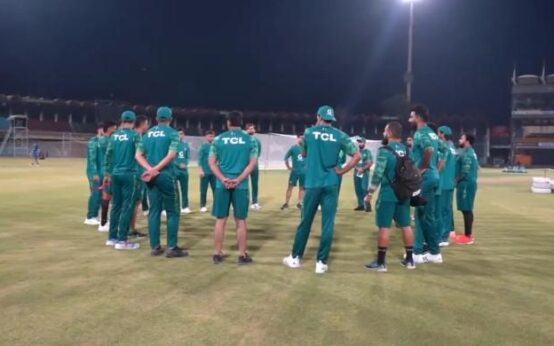The tactic is legal, amazingly. While deferred money is common in large MLB contracts, no one imagined the need to safeguard against the most coveted player ever choosing to postpone payment of 97 percent of his record-setting deal. Ohtani ignored the diminishing value of that $680 million over such a long time, and he trusts that nothing catastrophic will happen to the Dodgers or MLB in the future. After the Los Angeles Angels failed to make the playoffs in his first six big league seasons, Ohtani doesn’t just want to win with the Dodgers. He opted to equip them with the flexibility to dominate.
The two-way superstar signed a two-way contract. How Ohtani of him. During the long and quiet wait for him to make up his mind, the speculation portrayed him as some kind of counterculture sports figure who might value something besides his maximum value.
Ohtani kept to himself, in the months before free agency and in the pensive weeks he spent as perhaps the greatest athlete to hit the open market. And people shouted the darnedest things into the void.
Many wondered whether his West Coast preference would limit his options and subdue the bidding war. Or maybe his elbow surgery, which will prevent him from pitching next season, would change the structure or reduce the number of years on his contract. Then there was the most naive take of all: It was deemed plausible that Ohtani, who is Japanese, might restrain his demands because it would be the honorable thing for him to do — a belief that must have been conceived by a “Karate Kid Part II” zealot.
It was such cozy, convenient fiction.
Then, amid heavy anticipation that Ohtani would defy convention, he still stunned the world. He got his, and he did it his way. He redefined Sho-Time, making the most of his moment, reaching agreement on a 10-year, $700 million deal that will forever look like a typo before reportedly coming up with the idea to divide the money like no one ever will again.
I’m assuming it will not be allowed to happen again. Ohtani and the Dodgers invented some next-level collective balance tax evasion. Ohtani is too humble and likable to be a villain (unless you’re one of those Angels crazies burning his No. 17 jersey). But hatred — or envy — of the Dodgers just rose to a preposterous level.
The Dodgers still have wiggle room to pursue a major starting pitching upgrade to address their biggest concerns, which Ohtani can’t help with in 2024. Those aspirations include Yoshinobu Yamamoto, considered the next Japanese pitching prodigy, even though he might command a contract of more than $200 million.
Ohtani isn’t just a once-in-a-lifetime player. Sometimes it seems as if he is from another dimension. In a sport that struggles to create must-see moments, he is a stop-what-you’re-doing talent. Now that he plays for the Dodgers — a perennial contender, model franchise and premier brand in the nation’s second-largest market — he will pause time more often.
The Dodgers didn’t acquire him simply to improve their chances of winning another World Series. With the vast financial resources of their ownership group, they could have improved their team a number of different ways. But they had to have Ohtani because, despite what they’re paying him, it’s a wise investment to add a little Sho-Time to the way they operate. With advanced statistics, you can measure how much the Dodgers enhanced their World Series potential, but we’re just beginning to fathom how much their entertainment value has multiplied.
For six seasons, Ohtani had to shine through mediocrity to make people pay attention. He gets to do so now with the stage already set. He would look good in any uniform, but in Dodger blue, an icon will be cloaked in the iconic.
Ohtani’s deal is nearly $275 million more than the $426.5 million contract former teammate Mike Trout signed in 2019. But the Ohtani contract doesn’t mean the next free agent baseball superstar can gin up some deferred money concepts and ask for $70 million a season. He’s an extreme outlier in a game currently paying mortal, single-position superstars between $30 million and $40 million a year when they enter free agency.
Pitchers Max Scherzer and Justin Verlander are the only other players with contracts averaging more than $40 million. Both are at $43.3 million, but the future Hall of Famers signed short-term deals last winter with the New York Mets, who promptly failed with an aging, $350 million roster. It led the Mets to get off those contracts by the trade deadline.
In baseball, $40 million is the non-Ohtani standard for average annual salary, which is where New York Yankees outfielder Aaron Judge — working on a nine-year, $360 million contract that he signed after hitting 62 home runs in 2022 — resides alone. With a strong season, recently acquired teammate Juan Soto, who is still just 25, might get offered in the neighborhood of $40 million annually next winter, and his total pact could exceed $500 million because New York and other suitors might be willing to offer him 12 to 15 years of security.
But Soto could sign for $550 million and still lag behind Ohtani. The regularity of even a $50 million-a-year baseball superstar is still a ways away. Ohtani’s deal, especially with the creative math, won’t accelerate the timeline as much as you think.
As Ohtani transitions from the faulty Angels to Southern California’s high-functioning baseball team, he doesn’t have to move to take a dramatic leap in competitiveness. Still, the entire sports world feels the ground shaking.
In the end, after all the mystery surrounding how he would handle this situation, he did do something different. He took all the money, found the best team for him and somehow did it without seeming selfish and greedy.
When it comes to athlete power moves, Ohtani wrote his own cheat code and hid it in a secret location. To be worthy of finding it, the next superstar might have to play three positions and walk on water.


 Best Underground Water Leak Detection Equipment 2024
Best Underground Water Leak Detection Equipment 2024  Best Backyard Ideas: Turn Your Outdoor Area Into a Creative and Calm Haven
Best Backyard Ideas: Turn Your Outdoor Area Into a Creative and Calm Haven  Babar, Rizwan are good players but not whole team, says Mohammad Hafeez
Babar, Rizwan are good players but not whole team, says Mohammad Hafeez  Pak vs NZ: Green Shirts aim to bounce back against Kiwis today
Pak vs NZ: Green Shirts aim to bounce back against Kiwis today